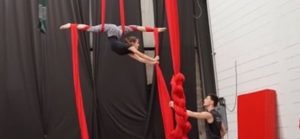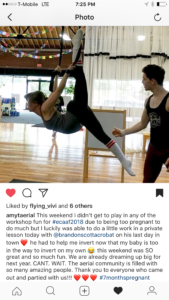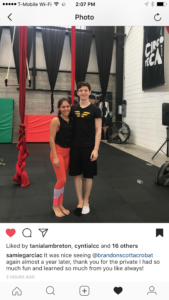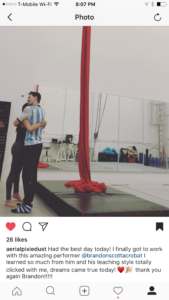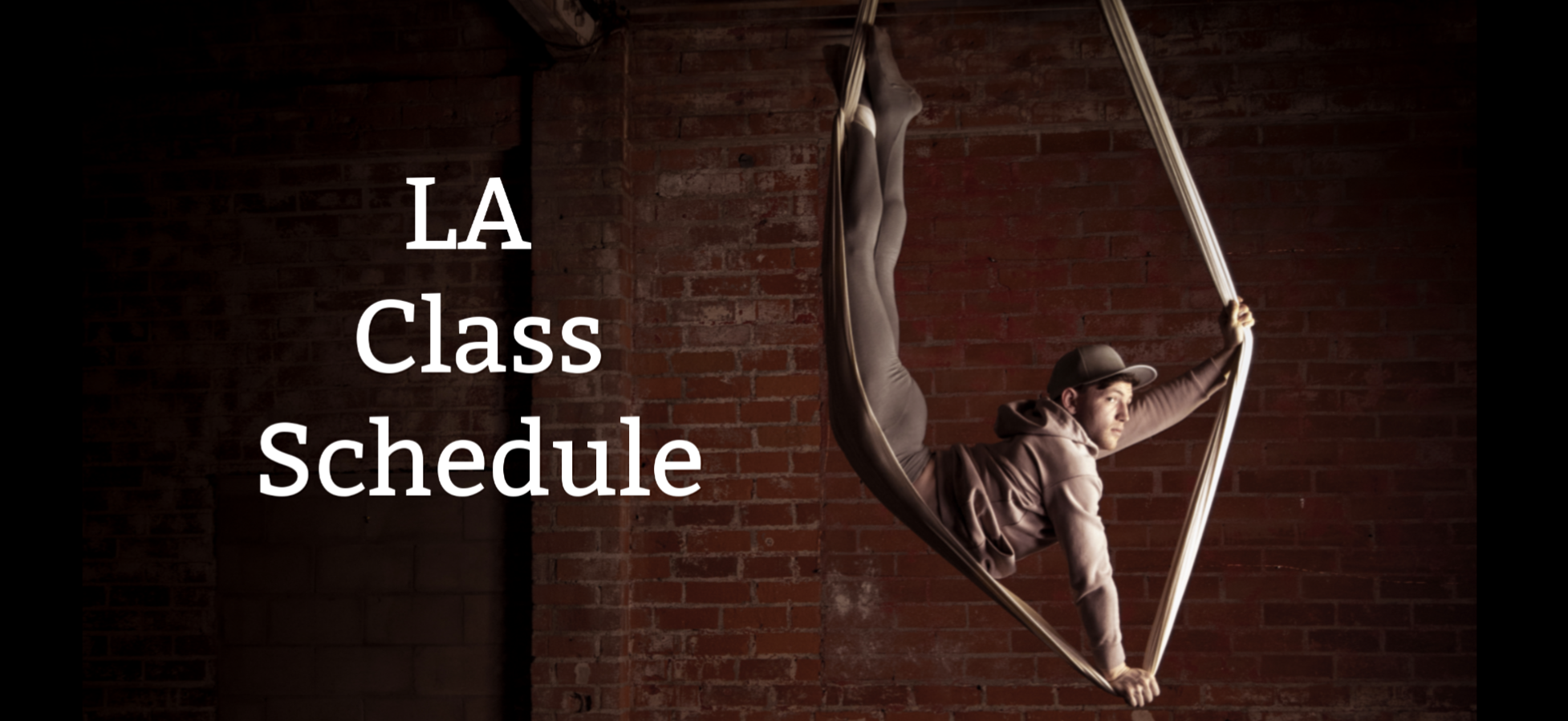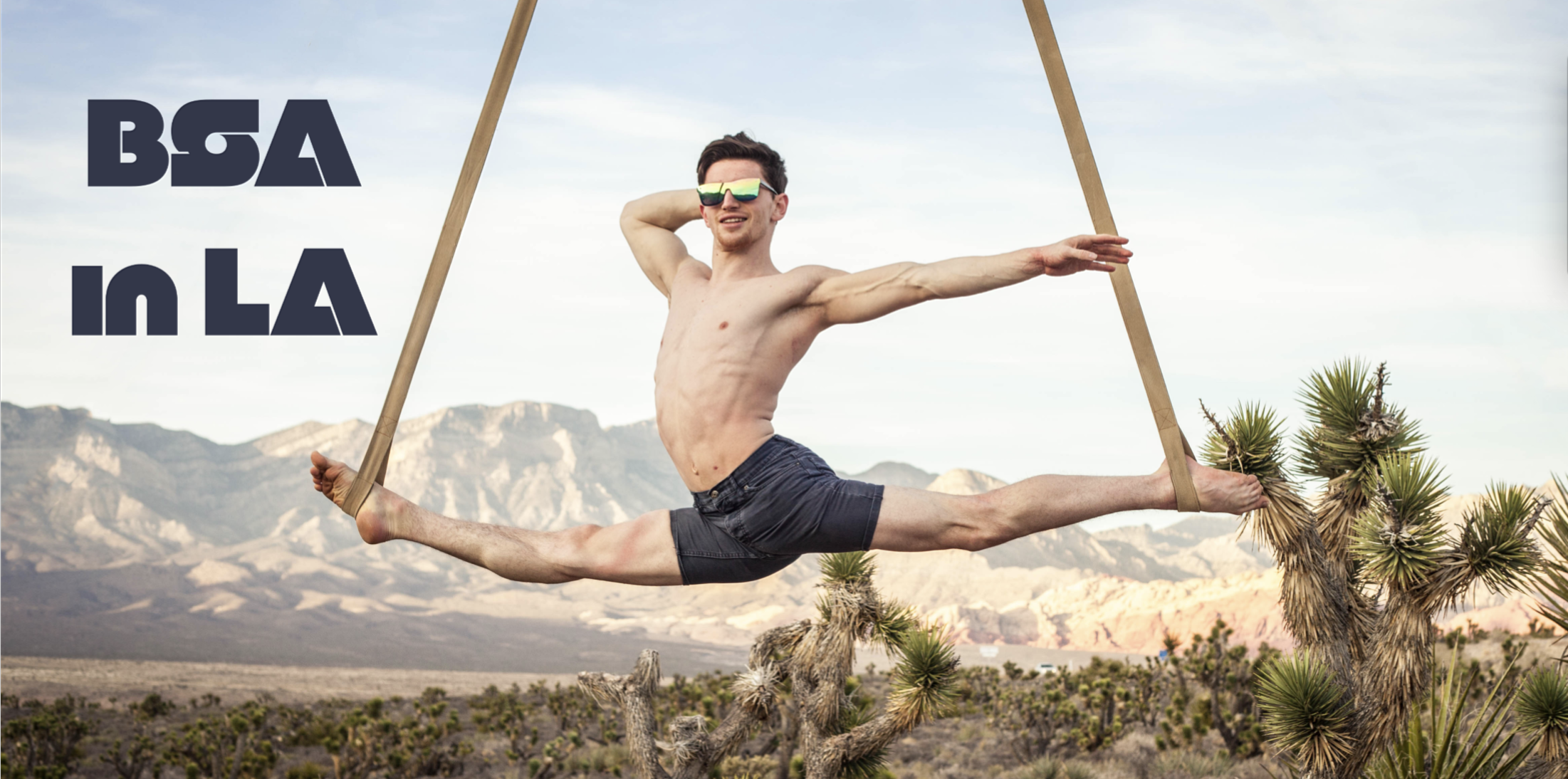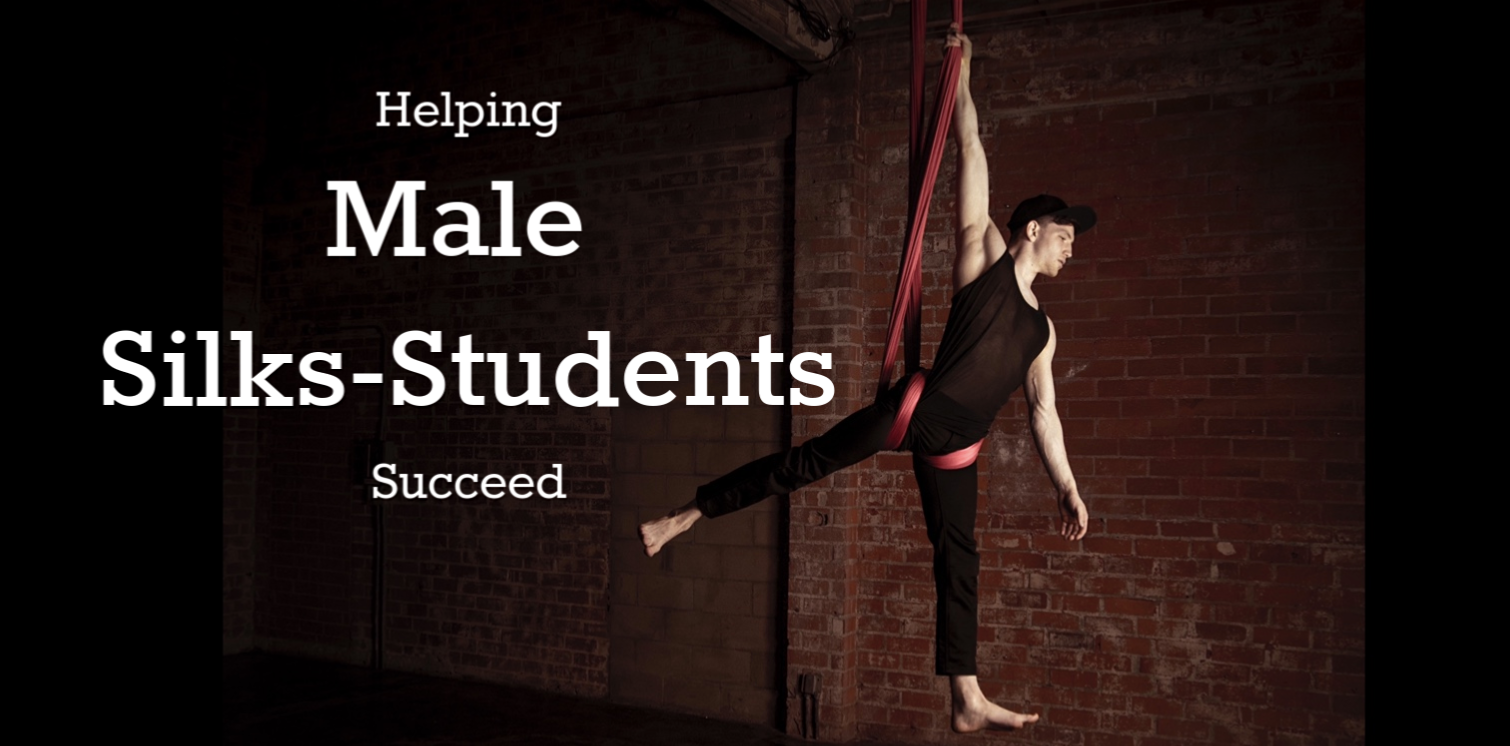This month, I had the wonderful opportunity to perform in both The Hungry Hearts Cabaret in Flagstaff, and A Very Potter Circus in Boise. Interestingly, after both of these events, I was asked the same question by two different sets of aerial coaches:
“How to I help my male silk-students work through the pain of different tricks?”
This question comes up in context of silks, hammock, and rope most often, because these apparatus deal with wraps around the hips and legs that aren’t experienced on steel apparatus or straps (though the tips below can cross apply too). The reason this becomes a concern is that when encountering something that is painful, and coaches aren’t sure how to help, many male students are simply abandoning those techniques altogether. And when they happens to be a foundational elements, like hipkey, these men go forward with a major holes in their repertoire.
This isn’t what we want, and it isn’t necessary to throw up our hands in defeat on this. As an male aerialist specialising in fabric for the last 6 years, I have gone through a lot of trial and error around this subject, and will pass along what has helped me onto you, so we can help reduce pain in all our students.
**Disclaimer** yes, I said reduce, instead of eliminate pain. Aerial is painful, and while these tips can help us circumvent much unnecessary discomfort, only mastery and perfect practise can stop it entirely (which is to say, it will never be avoided altogether). So when it inevitably comes up, breathe, and I promise you’ll come out OK. Additionally, I also said all our students, as these tips can apply to female students, and those not on the binary spectrum. Now to begin:
Clothing Adjustments
Odds are that you already knew this was coming, but my first suggestion is to wear a dance-belt. This not only keeps things modest while wearing tights/leggings for training, but will also keep things compact and in place. If you’re wearing underwear, especially if it’s not quite form fitting, then there is a lot more room for error, and things are more likely to be wrapped over and squished. 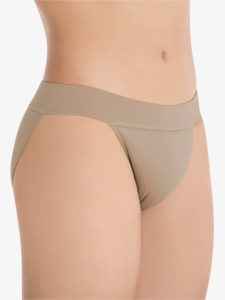
You can get a dance-belt at your local dance-wear shop, or conveniently online. The style is more personal preference, but I would personally recommend getting a full-back if you’re just planning to train in them. They are a lot more comfortable than a thong-back, however they give you a “unibutt”, which means that your butt just looks like one big cheek in your tights. This is only really a concern when performing/taking photos, for which I would recommend a thong-back.
I just want to end on this note: training on silks doesn’t curse you to wearing a dance-belt always and forever (though over time they honestly get more comfortable). Now that I have a lot of practise with the next two tips, I can comfortably train and teach in regular briefs. So, just know you won’t be stuck in a dance-belt every time you train for the rest of your life.
Manual Adjustments
For a short term solution for managing pain in a particular trick, break down the wrap on the floor, and map out where your stuff needs to be to avoid being underneath. Then, place it in that position before each practise of that sequence.
I’ll use hipkey as an example, because it is both simple and universal: if we take apart the anatomy of a hipkey, we realize that the pole goes under the bottom thigh, and then proceeds between the legs, over the pelvis, and onto the lower back. Breaking this down, we know that we don’t want anything falling beneath the tail coming over the top thigh. Therefore, moving everything over toward the thigh on the bottom of the hipkey (under-which the pole goes) before practicing sequencing there can manually get everything out of the way, and reduce pain.
This can be done for more complicated wraps over the hips as well. Simply dissect them on the ground, and then move things into the window of the wrap. Everything is more likely to stay put -again- if it is within a dance-belt.
Technical Adjustments
Manual adjustments before every turn will get old fast, and also can be socially uncomfortable and unsanitary for shared apparatus. So, the long-term, though admittedly slower solution to the problem comes from adjusting technique to include movements that alleviate pain. This takes some trial and error, but after finding these pathways and integrating them for a while, they’ll become muscle memory and students won’t have to consciously think about them every time.
This is a bit of a personal journey for each individual, however here are some tips to get you started. I’ll be relating these to salto-wraps, as they seem to cause the most trouble:
- Wrap Intentionally: A lot of pain can be prevented by placing wraps in a better place on the highs and hips. But don’t just think about the initial placement; also consider where the wrap goes as you change your orientation in the next steps. Wrapping tightly can also help the fabric to stay where you put it.
- Play with Transitions: A lot of times, going through a transition through straddle will be more pleasant for a man than going through pike, in a way a female coach wouldn’t know to cue. This is the case much of the time when opening from a hipkey into a salto position. Take the time to explore different ways of moving from one position to another when you discover pain between shapes. Relay these discoveries to your coach!
- Climb Above the Wrap: This is probably the most important tip I have to give in this article. The most dangerous movement (in my experience) is to get to a position through “sliding”, instead of “climbing and settling”. When getting to a salto from a single-knee-hook above you, do not climb up meekly and then slide the pole around to be behind you. This will almost always result in unpleasantness or even full-on crushing. Instead, use your big strong muscles to climb up and above the salto, and then gently settle down into position through the space you’ve created. This technique can be used for a lot of tricks, and should be utilized by female acrobats as well (as it makes you stronger to climb up higher, and sliding feels good to no one).
- Have Confidence and Go: As a final tip, have confidence that the wrap you’ve created is correct and upon encountering pain, continue on! If you’re up in a salto, proceed through the drop. If the sequence goes on, then move to the next shape! When students feel pain, they tend to let their fear response slow them down or stop, but this only prolongs what is causing the pain. Forge on, silks student, and the pain will soon be behind you.
Whether you are a male silks student yourself, or a teacher of male students, hopefully this article has given you some ideas for making training more enjoyable. We need more men in the aerial world, and when we get them, they need our encouragement to continue on through their discomfort, and become the best acrobats they can be. So, pass along this article, implement this knowledge, message me if you have any more questions, and I’ll see you in the air!

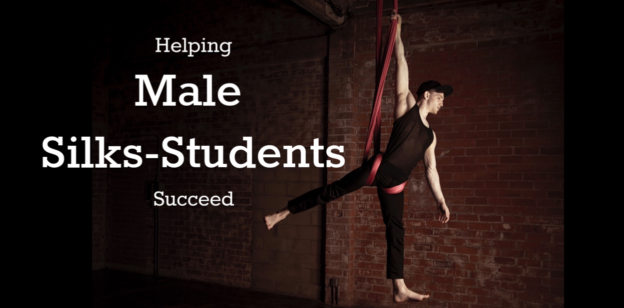
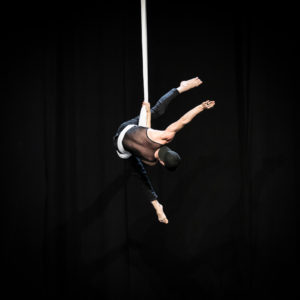


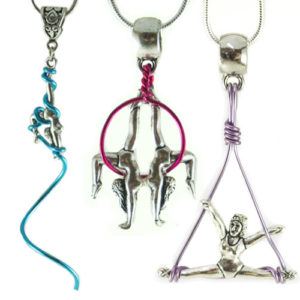
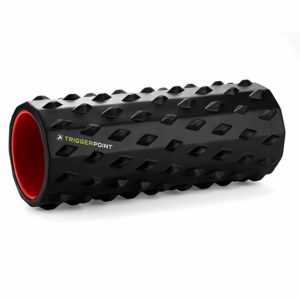
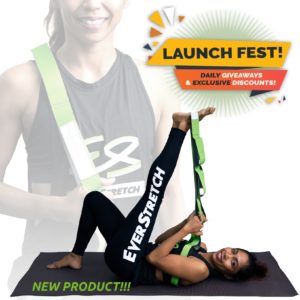

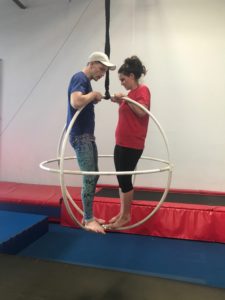 Direct-Message on Instagram, or if you prefer,
Direct-Message on Instagram, or if you prefer, 